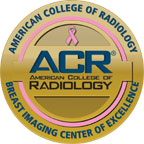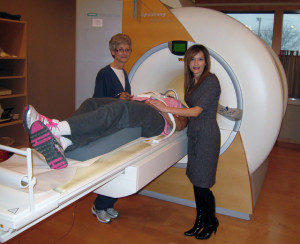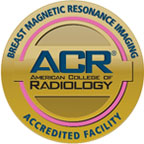What is 4D Breast MRI?
 RMI is an accredited facility for 4D Breast MRI (four-dimensional breast magnetic resonance imaging), which is part of RMI’s four-pronged approach to fighting breast cancer along with mammography and breast ultrasound.
RMI is an accredited facility for 4D Breast MRI (four-dimensional breast magnetic resonance imaging), which is part of RMI’s four-pronged approach to fighting breast cancer along with mammography and breast ultrasound.
By introducing 4D Breast MRI to this region, RMI has expanded its tradition of leadership as an accredited Breast Imaging Center of Excellence, and as the first practice in Michigan to be approved by the Mammogram Medicare Screening program.
An advanced technological development in breast imaging, 4D Breast MRI supplements detailed three-dimensional MRI (see our MRI for general information) data with a “fourth dimension” of information based on time and motion, creating an enhanced view  of the real-time functioning of the breast and any suspected lesions or tumors. 4D Breast MRI may be recommended as a follow-up diagnostic exam after a suspicious mammogram. For women at high risk of breast cancer or who have dense breast tissue, 4D Breast MRI may be recommended as an additional screening method in conjunction with the annual mammogram.
of the real-time functioning of the breast and any suspected lesions or tumors. 4D Breast MRI may be recommended as a follow-up diagnostic exam after a suspicious mammogram. For women at high risk of breast cancer or who have dense breast tissue, 4D Breast MRI may be recommended as an additional screening method in conjunction with the annual mammogram.
Four-dimensional imaging gives doctors a better chance of finding breast cancer early, and may reveal tumors that other imaging techniques might miss. If cancer is detected, four-dimensional imaging makes it easier to discover additional tumors in the same or opposite breast and provides better information to guide treatment decisions, such as lumpectomy (removing diseased tissue only) vs. mastectomy (removing the entire breast), or single vs. double mastectomy.
You can view pictures of our examination rooms here and see that RMI’s Lennon Road MRI unit has an open feel for greater patient comfort.
Preparing for 4D Breast MRI
 Please complete and bring with you our MRI History Sheet and MRI History Form.
Please complete and bring with you our MRI History Sheet and MRI History Form.
Generally, you can expect to wear a gown that RMI will provide. You should also inform us before scheduling your appointment if you have any metallic surgical implants or accidentally implanted metallic objects (for examples, see our general MRI page). You may need to remove any jewelry or accessories that could interfere with the radio waves.
During the exam, you will lie face down on a table combined with the MRI unit. The table is designed with special openings in which the breasts are positioned for the exam.
Resources